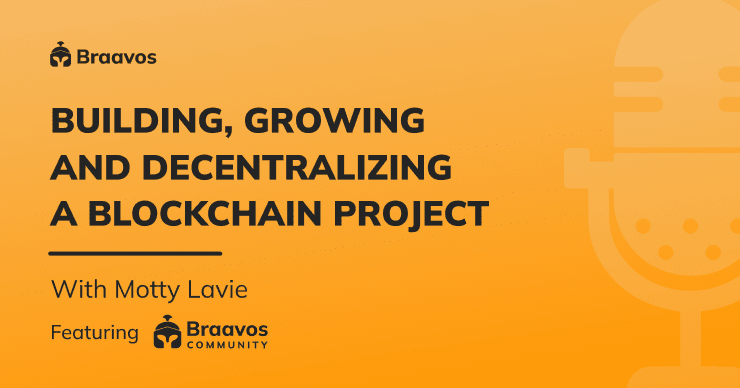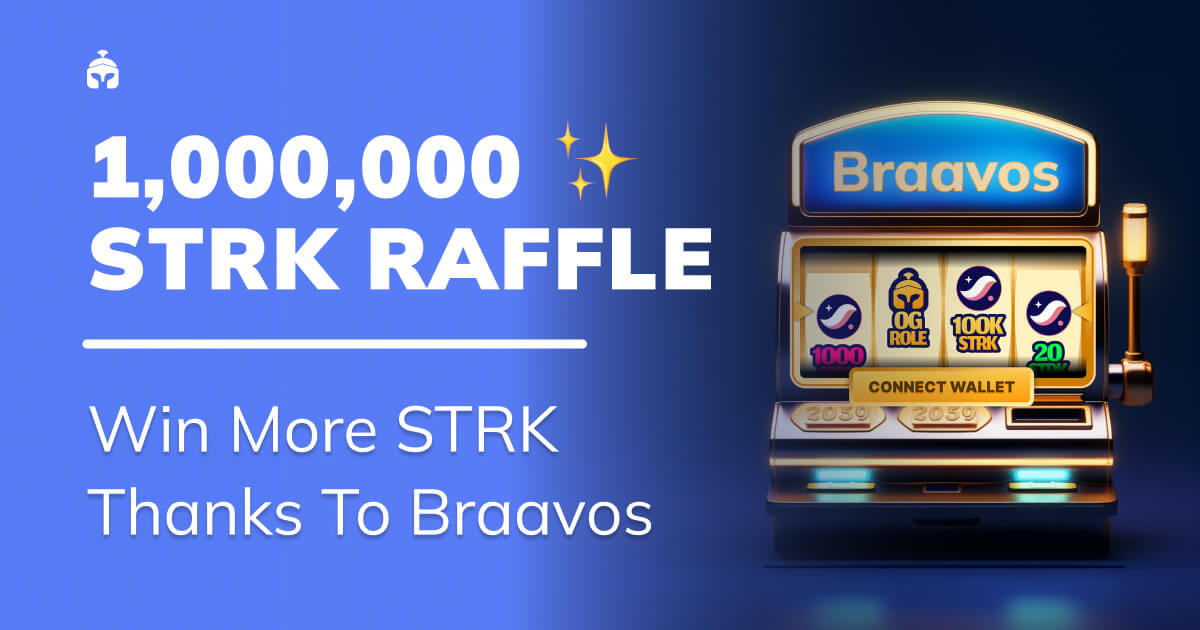Navigating the Blockchain Industry: Project’s Structure, Growth and Decentralization
Discover the blockchain builder’s side: from the key elements of a blockchain company, to growing and decentralizing it.

For this new episode of #Braavosianstalk, our host Motty Lavie, Braavos’ Founder & CEO, and Bertrand Blancheton, Head of Marketing, are discussing the blockchain industry and the key elements of building, growing and decentralizing a blockchain company.
Questions overview
- How should a tech company be structured to fulfill its commitments?
- What are the key elements of a blockchain company?
- Is there a simple way to understand who does what and what is necessary in a tech or blockchain company?
- What exactly are “Labs” in the tech industry?
- Does the StarkNet Foundation have the same structure as StarkWare?
- How is decentralization achieved in practice? How can a company truly give up control over their own protocol?
- Many projects are being built today with the aim of keeping the companies private and not decentralized. What is your viewpoint on this?
- At what moment should a company decentralize itself?
- What are the risks of not decentralizing Braavos or other crypto wallets like Metamask?
- Does a DAO always require a token? Can DAOs exist without a token?
- As a decentralized company, how do you reassure your initial investors that they will get a return on their investment?
In the tech industry, it can be challenging to determine the type of profile a company requires and how it should be organized to deliver on its promises to the market. In your opinion, how should a tech company be structured to fulfill its commitments to the market?
There is no simple answer to this question, as there is no one-size-fits-all approach. The structure of a company is highly dependent on the product, culture, and stage of development. For example, a project that is only a few months old will not have the same requirements as one that has been operating for five or twenty years. When building a company, it is crucial to establish the right structure that will enable you to achieve your goals at each phase of the company’s growth. This structure will differ from one company to another and from one product to another.
In your opinion, what are the key elements of a blockchain company?
Well, it’s important to keep in mind that in the blockchain and cryptocurrency industry, the ultimate goal is not to be a traditional company, but rather a decentralized autonomous organization (DAO). We want blockchain companies to be decentralized and not controlled by a single entity. However, until they become decentralized, it is essential for any technological project to have a very capable technical team that has both the knowledge of the material and the ability to execute it. I like to call it a blend of brainpower and execution ability. If you have both, you are probably in a good position.
As a non-technical person, I often come across many different keywords in the tech industry such as front end, back end, smart contracts, etc. Is there a simple way to understand who does what and what is necessary in a tech or blockchain company?
This depends on the project and its product. Front-end developers usually deal with the user interface (UI) components and the application layer. Back-end developers are responsible for the infrastructure side, which usually involves servers that we don’t have in the decentralized world. Full-stack engineers work on both front-end and back-end development. And in the blockchain world, we have smart contract engineers who develop and manage the smart contracts on the blockchain.
Now these positions depend on the company and what it needs to deliver its promise. Let’s take StarkWare for example, they’re building a blockchain, so the front-end element of the blockchain is not of key importance and thus their focus initially was not on front-end engineers because there is no front-facing application layer of the blockchain.
On the other hand, if we take the Braavos wallet, it has two sides:
- The smart contract that resides on-chain
- The application side, that is also divided into two parts
- The front end parts which are facing the user such as the user interface, the screens, the icons, the texts, and so on.
- The infrastructure that caters both the user interface and the communication with the blockchain.
As I said, it’s highly dependent on the company and the product to be delivered. You need to find the right people for each of the product’s functions and this changes from company to company and from phase to phase, meaning each phase in the lifetime of the company needs a bit of a different focus.
In web2, especially in the SaaS industry, the concept of an innovation department, which is often called a “lab”, was quite popular. This trend is becoming more common in the blockchain industry as well. What exactly are these labs?
Labs are typically established once a protocol becomes decentralized and gets separated from its parent company. Let’s take Uniswap as an example. The Uniswap company developed the decentralized exchange, and once control was distributed to the Uniswap DAO, the Uniswap company itself became irrelevant. As a company, they no longer controlled the protocol, but the Uniswap DAO needed to continue operating to support the protocol. For this reason, they need a source of engineering power, which is provided by Uniswap Lab. The Lab is responsible for supporting and upgrading the protocol to new versions, such as Uniswap v3, and there are now discussions about Uniswap v4 and NFTs. So in our industry, the Labs usually come into play when the project becomes decentralized. They are sometimes called Foundations or Development Foundations, among other names.
Let’s take a look at what StarkWare is building with the StarkNet Foundation. Will it have the same structure as StarkWare currently does or does the Foundation require a different structure?
It certainly needs a different structure because the goal of the StarkNet network is to become decentralized. In fact, StarkNet has already begun its decentralization process. There is already a foundation in place, and the initial participants of the voting power of the foundation consists of developers, users, or community representatives for the StarkWare investors and StarkWare itself. See this blog post for details on the voting participants. It’s also worth noting that once the protocol is fully decentralized, then more and more people will be able to participate.
How is decentralization achieved in practice? How can a company truly give up control over its own protocol?
Once you establish a company, you have a legal entity in a certain state, whether it’s in the United States, London, Switzerland, or Israel. And this legal entity has an address and a bank account. But the idea here is that once you decentralize the protocol, the company gives up control. How does it give up control over the protocol?
There are multiple governance models. Today, the most common decentralization model is by issuing tokens to various users who are not part of the company. These tokens then have at least partial control over the protocol, allowing the company to become decentralized. Let’s take the MakerDAO with DAI as an example. In their governance model, changes to the protocol can only be made if they are voted and approved by the majority of governance token holders. Even if the original developers or founder of MakerDAO want to make changes, they cannot do so without the approval of the token holders. This extreme case of decentralization means that token holders have control over everything that happens to the protocol. However, this has its drawbacks, as all token holders must vote for every small decision, which considerably slows down development. To address this, there are new mechanisms and suggestions on how to give more power to the team that runs the protocol, so they don’t need to go back to the token holders for every decision. Overall, decentralizing a protocol involves giving up control to token holders and creating a system of democratic governance that enables decision-making based on majority rule.
Some people feel that many projects are being built today with the aim of keeping the companies private and not decentralized. What is your viewpoint on this?
In that case they need to ask themselves what they are doing in the blockchain industry, because building a centralized product in web2 is much easier than in crypto. So if you don’t want the decentralization element in your protocol, why are you building in the blockchain industry? I don’t see strong reasoning here and I believe that these kinds of solutions won’t last long because the fundamental concept in crypto is to have self-custody of your assets and to have a censorship-resistant protocol meaning there is no centralized point of failure. If you give up these core values and your end goal is to remain centralized, then you should establish a classic web2 company. It is much simpler to develop, scale, and innovate since you have many more tools, making it easier for you to launch a better product. And if you build a centralized product on blockchain technology, then you will be outcompeted since development will be easier for your competitors. This is why I think blockchain technology and decentralization goes hand in hand.
If you undertake a project on the blockchain, you inherently aim to be decentralized in the long run. It doesn’t mean that you have to be decentralized in the first year or even in the first three years. However, at some point, you must consider why you are doing this, what you want to bring to the crypto space, which functionalities and values you want to support. You will reach the conclusion that decentralization is necessary; otherwise, you will revert to traditional web2 or traditional finance.
At what moment should a company decentralize itself?
Before decentralization, while the company is still centralized, the main advantage is that it can move much faster and make progress with training wheels. This means that the company still has full or almost full control over the project, so if a mistake is made, it can be fixed quickly. On the other hand, when a company is decentralized, it is also possible to fix mistakes, but it will take much longer because the core team is not the sole decision-maker for the protocol. My opinion is that a protocol should be decentralized once it becomes more mature and the pace of innovation in which it operates is slowing down. Additionally, it should become decentralized when it becomes large enough, which makes it a risk to remain centralized. In my view, this is when companies should start the decentralization process. However, this is a process that, as we see with StarkNet, does not happen in one day.
What are the risks of not decentralizing Braavos or other crypto wallets like Metamask?
Compared to different protocols, the risks are much lower because Braavos is fully self-custodial, meaning that only the user controls their wallet and the funds in it, even though it is not fully decentralized. However, there are still risks that exist. For instance, if Braavos were to operate from the United States and the country decides that self-custodial wallets are illegal, then we would have two options: to break the law, which we are reluctant to do, or to shut down the platform. If we were centralized, we would have to shut down the platform, and the wallet would remain inactive. People would still have full custody of their funds, but there wouldn’t be any further updates.
On the other hand, if the protocol is decentralized and governed by different token holders residing in various parts of the world, then they are not subject to a single jurisdiction. This makes it much harder to censor or ban them compared to centralized entities. While it may not be critical for wallets, it could be extremely problematic for DeFi protocols or NFTs.
Does a DAO always require a token? Can DAOs exist without a token?
This is a great question, and the answer is still not definitive. The way in which DAOs are managed and decisions are made is still evolving. I certainly think that we will see new models and ways in which protocols are governed. I can suggest a few things that are not specifically related to tokens. We could give governance powers to those who interact the most with the protocol. For example, users who use the protocol the most could have a say in how the protocol evolves, as opposed to just investors who bought tokens for voting and don’t use the platform regularly. This is just one example, and there could be other ways to control protocols without linking them specifically to tokens or to monetary power, meaning that those with the deepest pockets control the protocol.
As a company who’s end goal is to decentralize, how do you reassure your initial investors that they will get a return on their investment?
That’s a great question. I think that when you structure a company and bring in investors, it’s important to ensure that both investors and founders are aligned in terms of the end goal of the protocol. For decentralized protocols, this means that neither investors, founders, nor company employees or engineers will control a large stake of the voting power. So in that sense, investors can still make a profit, but they should understand that the community at large receives most of the monetary value and voting power.
To join the Braavos Nation and share your feedback, we encourage you to connect to our Discord, and Twitter to get in touch and catch the latest news.
You can also benefit from the Hardware Signer by downloading the Braavos smart contract wallet on mobile for Android and iOS, and on multiple browsers: Chrome, Firefox, and more.



